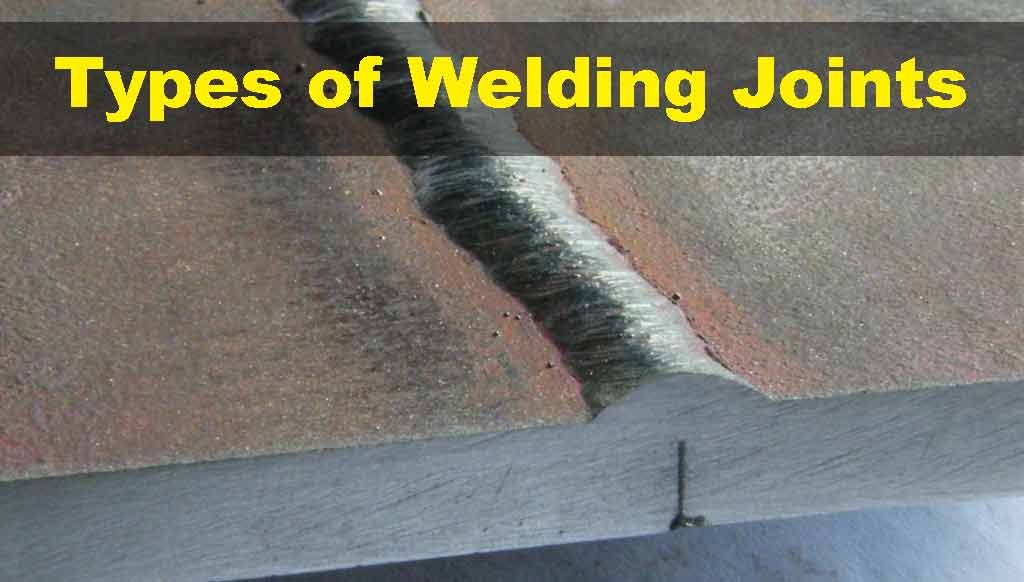
Top 5 Types of Welding Joints
The joints are regularly utilized for long-lasting welding. Welding demands are endless. Various applications need particular types of welds. Different types of welding joints are made to fulfill the need and forces of every individual application.
Welding technology has progressed to a great level. The application varied from the aeronautic industry, automotive, hydraulic turbine, pulley, flywheels, mill stands, fabrication, and home use.
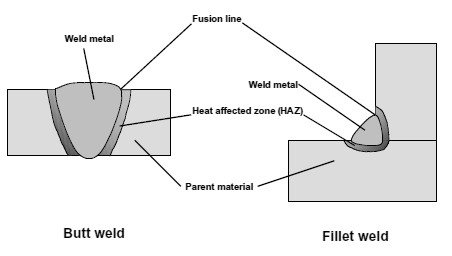
These joints offer high efficiency, low weight, smooth appearance, low cost, flexibility in alteration, and joining in difficult locations through welding. The welding process is appropriate for combining the components.
How to define a welding joint?
AWS defines welding as “the manner in which materials fit together” The welding joints are margins otherwise points where dissimilar metals are connected.
There are many types of joints available but the Welding Society in America has classified them into the butt, corner, edge, tee, and lap joint. These joints have distinct looks at the joint where real welding takes place.
We need the preparation of the joints before the welding procedure. The process of preparation involves routing, shearing, stamping, forging, casting, filling, machining, grinding, plasma arc welding, oxyacetylene cutting.
Five Types of Welding Joints
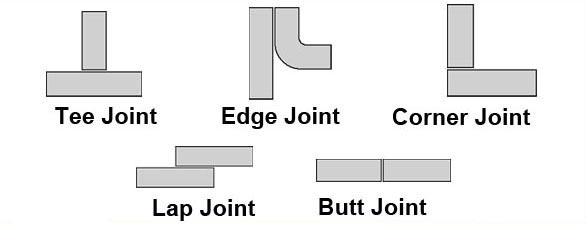
The various jobs in a project require different types of welding joints to stand up to the needs and strength of each solitary application. The experienced professionals after working on years have classified the joints into five types as butt, lap, corner, edge, and tee joints.
1. Tee Welding Joint
The Tee joint weld can be created by interconnecting two ends at 90-degree angles, while one element lies in the middle of the other in the group. The two ends are joined like a letter T, so is its name Tee joint.
The Tee joints are considered a fillet weld. It is possible to create this joint with pipe or tube welding at a base plate. Extra precautions to be taken to ensure essential penetration into the roof of the welding.
The application of Tee Joint welding includes when a metal part is joined to some base, joining thin plates, structural, and machine applications.
Welding Styles for Tee Joint Creation
- Plug weld
- Fillet weld
- Slot weld
- Bevel-groove weld
- Flare Bevel- groove weld
- J-Groove weld
- Melt- through weld
2. Lap Welding Joint
We can create a lap joint weld by placing two metals of different thicknesses, one above another, and joined by a welding process. It is a fillet type that can weld on one side or dual-sided welding. It creates a lap joint when two metal pieces are placed in an overlapping manner on top of one another.
The application of lap joint welding includes TIG welding, resistance spot welding, and stick welding. We employ this process for plastic, tabling, wood, framing, cabinet making in automation.
Welding Styles for Lap Joint Creation
- Fillet weld
- Bevel-groove weld
- Plug weld
- J-groove weld
- Slot weld
- Spot weld
- Flare bevel-groove weld
3. Edge Welding Joint
Edge welding joints formed when sheet metal parts which have flanging edges attached to the adjacent pieces. This joint is a groove type weld, it places the two pieces side by side and weld on the same plain in a welded joint. The heavier applications require filler material to melt and fuse in the joint to reinforce the base material.
The Edge type of weld joint does not enter whole for the width of the joint, thus not deemed fit for the applications like stress and pressure. The application of this joint includes where sheet edges are nearby and roughly in a parallel plane to the welding zone and the thickness of sheets is smaller than 3mm.
Welding Styles for Edge Welding Joint Creation
- Square-groove weld
- Bevel-groove weld
- J-groove weld
- U-groove weld
- V-groove weld
- Edge-flange weld
- Corner-flange weld
4. Corner Welding Joint
The corner joint can be constructed by connecting the corner of two metal sheets at the right angle. The two metal parts now join to form an L. This one is the most popular welding joint in the sheet metal industry to join the metal sheet at the right angle.
The applications of corner joints include sheet metals in box designing, box frames, and other fabrication.
Welding Styles for Corner Joint Creation
- Fillet weld
- Spot weld
- Square-groove weld
- Bevel-groove weld
- V-groove weld
- J-groove weld
- Flare V-groove
- Edge corner-flange weld
- U-groove weld
- Corner flange weld
5. Butt Welding Joint
The butt welding joint can be created by attaching two metal ends together. Here two ends lie on top of a homogenous plane else side by side. It is a universally accepted welding joint. It is a common joint for pipes, valves, fittings, flanges, and other appliances. The butt joint welding is also called a square groove weld. This joint is commonly employed to join the metal or even plastic parts.
Welding Style for Butt Welding Creation
- Square butt weld
- Bevel groove weld
- U-groove weld
- J-groove weld
- V-groove weld
- Flare V-groove weld
- Flare bevel groove
Fillet Welding Joint
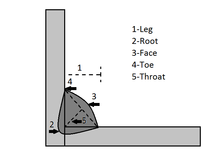
It is the most common welding joint made with arc welding. It comprises nearly 75% of joints in the arc welding process. The fillet welding joint is another terminology for a lap, corner, and tee joints. We do not require any preparation of the edges to make this fillet joint. These types of welding joints are commonly used in piping systems to join pipe to socket joints.
Preparation of Welding Joints
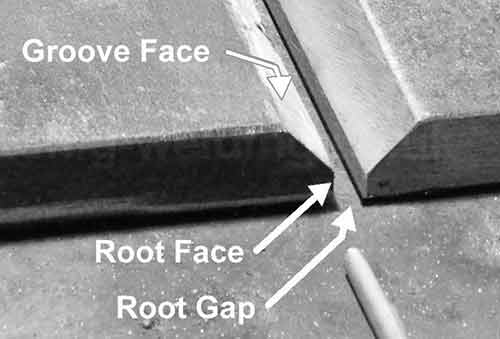
There are numerous ways for preparing the welding joints.
- Shearing
- Casting
- Forging
- Machining
- Filing
- Stamping
- Routing
- Oxyacetylene cutting
- Plasma cutting
- Grinding
Riveting vs Welding

Riveting and welding are techniques to join metal with metal. Both techniques have their advantages and limitations. The choice depends upon the situation in a project. Neither of them is best in all the circumstances. We will discuss the strength and weaknesses of both the metal joining processes.
Welding is Preferable than Riveting
- The welding can be placed anywhere on the metal. Edges are possible to weld without overlapping. Riveting technology needs some clear space from the edge to join the metal convergence.
- The welding process saves the extra weight in the construction process. The metal is itself joined to metal, and it adds no hardware. The riveting has its weight itself to add the weight to the site.
- The strength is diminished in riveting while it remains intact or even gets better with a welded joint.
- The aesthetic looks are of paramount importance in some projects which get jeopardized with riveting while it is very well taken care of in the welding technique. The aesthetic look and strength run hand in hand.
- Types of joints in welding prove to be better as there is an actual joining of the margins with welded metal.
- Joining the pipes and columns is an easy option with welding while it seems impossible with the riveting.
- The faster way of joining metal is welding by different types of welding joints and completing the project much faster.
- It needs less manpower in welding so it becomes economical.
- The welding is flexible where alterations can be done easily which is not possible with riveting.
Brief on Welding Safety
Most people generally are not aware of how dangerous welding can be. With a flow of electricity and heat, welding may be a serious operation. The few of the things with welding can occur are eye burns, skin burns, shocks, electrocution, and flying debris.
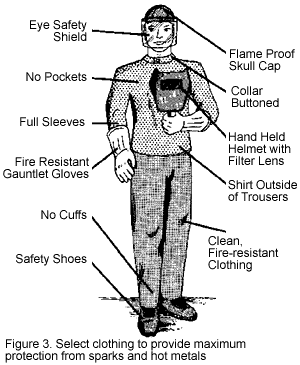
Most of the trained welders are aware of the precautions to adhere to. But the novice or beginners are not aware of the safeguard to be taken during welding.
Checkout in details: Tips For Welding Safety
We will try to enlist a couple of things which can be a help. In case of skin burn, clean the area with chilly water and examine thoroughly. If a blister or charring has occurred, then seek medical help. In case of a mild burn, you treat the area with aloe vera to soothe the skin and analgesic to relieve the pain.
When the involvement of the eye is there, the welder’s eye or arc eye happens. There is burn to the cornea of the eye. The corneal burn typically heals within a few days naturally. Sometimes the injuries may take to shock, which will not lead to more complications and resolve. In complicated shock, medical help is advisable.
You Might Also Like.
7 Mistakes In MIG Welding And Their Prevention
5 Commonest MIG Welding Hazards And Their Prevention
10 Common Technical Mistakes New Welder Make And How To Prevent
Six Effective Tips For CNC Machine Preventive Maintenance
In Conclusion
We have been working, experimenting, and studying the welding for years and aware of the fact that some joints are stronger than others without stressing much about the differences. In this guide to welding joints, the information has been collected in one place which will be a help to us in the future as guidelines.
Make sure to choose the right welder and proper welding technique for the near-perfect results. Choosing the right technique and process is the best habit to develop at the earliest.
The welding floor should keep an excellent stock of First Aid Kit handy. Judge your welding project and decide accordingly. Safety is a habit, develop it at the earliest. Ensure whatever you are operating on “STAY SAFE”
Enough, I have said, now it’s your turn to ask a question, looking towards you for any of the doubt.
Read more: Types of Welding Joints
Download: types of welding joints pdf
